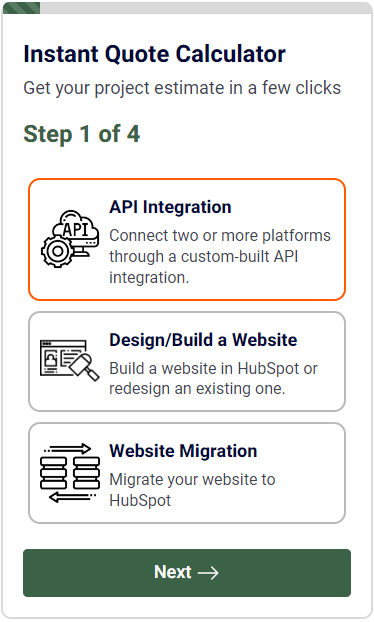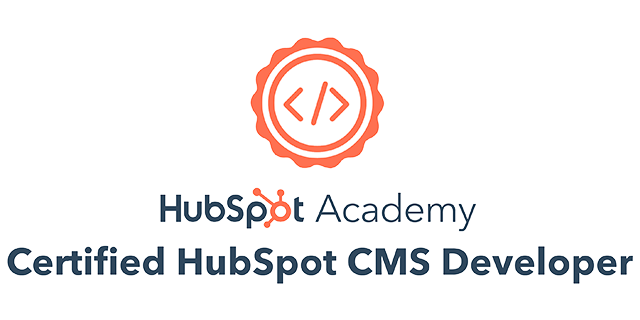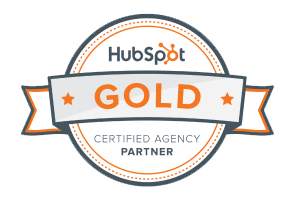Content management systems (CMS) became very popular after the notion of Web 2.0 was coined. CMS allow users to manage and personalize the content of a website without any coding or technical knowledge. According to statistics, 51% of the CMS market share is attributed to WordPress, making it the top CMS on the planet. HubSpot is one of the fastest growing CRM. Very often companies working with WordPress and HubSpot want to develop an integration between the two. Using the two together can help you to create the perfect site and send your traffic into the stratosphere.
Integrating WordPress and HubSpot
HubSpot and WordPress can be integrated at two levels described below. If you are looking to build a WordPress to HubSpot integration, our API development team will be happy to help.
Shallow Integration
At this level, the HubSpot tracking code is installed on a WordPress website. Once the tracking code has been installed, the WordPress website will start tracking the visitor journey in corresponding HubSpot record.
Follow this article to copy HubSpot tracking code and then follow your WordPress theme specific instructions to install it in the footer of your website.
Deep Integration
At this level, WordPress website integrates with HubSpot forms, popups and live chat. Therefore, when somebody submits a form on a WordPress website, it is automatically recorded as a submission for the corresponding HubSpot form.
Luckily there is a plugin available for the purpose.
Why is WordPress and HubSpot integration important?
A WordPress and HubSpot integration can help a business in following ways:
It Drives Traffic to Your Site
Advertising has become a lot more complicated in the last few years. Prospects are busy and don’t appreciate being interrupted so that you can deliver your marketing message. What’s more, it is harder to create a perfectly targeted marketing message using traditional advertising. Getting your marketing message out using conventional advertising is harder. You’re relying on a more generic message that could easily be ignored by your prospect. It’s a losing prospect overall because the people who pay attention might not even want to buy the product. Inbound marketing, on the other hand, is focused on allowing the prospect to seek you out. They are out there looking for information on the type of product you’re selling, so your content is immediately relevant for them. Better still, you can provide them with valuable content that establishes your company as a valuable resource. Because the content is focused around providing value rather than pushing sales, your prospect is more likely to want to read/ watch it. They’re also far more likely to share the content. With this form of marketing, you’ve got a bit of a head start. These are people that are interested in finding a solution to their problems. Your product provides a solution, and so it’s already a good fit. Now take that advantage, and create targeted content that speaks to your ideal target market. The content allows them to learn more about your brand and also removes any pressure to buy. Instead of having an ad blasted at them at inconvenient times, they can seek out more information when it suits them. It’s a win-win. You’re not wasting time and your advertising budget on people who may not be interested at all. Instead, you’re creating targeted campaigns that provide information on a topic that your prospect is interested in and that they want to consume.
Converting Web Traffic into Properly Qualified Leads
Once the content has drawn visitors to your site, the next step is to turn those into leads. For this to happen, you’re going to need to get them to give you their contact details. If you’ve taken some time in creating highly targeted traffic, now’s the time to capitalize on the effort. This is where you offer your prospect something of real value in exchange for those contact details. The pertinent phrase here is that it should be of real value. The content that you provide is a reflection on your company so use it to make a great impression. It could be an e-book, a report, an email course, and so on. Keep it valuable to your target audience and use it more as a brand-building exercise than an outright punt for sales. HubSpot makes it easy to create high-converting landing pages and automates the delivery of content.
Convert Those Leads
Now that you have the lead, you want to nurture the relationship so that your prospect becomes a client. A lot of companies make the mistake of rushing this process. This is fatal if it occurs at the wrong time during the buying cycle. People typically require around seven to twelve touchpoints before they actually make a buying decision. Hounding them for a sale too early in the process will scare them off. The problem is, how do you know what stage of the cycle they’re in? This is where the value of HubSpot starts hitting home. The software allows you to track the online interactions that your prospect has had with your brand. You’ll be able to pick up:
- How many times they’ve visited your site.
- What they did when they were on your site.
- Whether they’ve signed up for more information.
- If they’ve opened emails that you have sent to them.
- What purchases they’ve made.
- And a lot more besides.
You get to build a full picture of their interaction with your company. This enables you to build a real relationship with them. Remember that it’s easier to sell to a client that has already purchased from you, than selling to someone completely new. A lot of companies make the mistake of pushing hard for that initial sale and then ignoring the client after that. It’s far better to get to know the client well and then keep in touch. It could be through something as simple as a newsletter, or something like a survey. Get them hooked by providing outstanding service with their first purchase. Keep them hooked by touching base with them regularly. This can be automated using HubSpot. All you need to do is to identify key trigger events and then create an email message/ SMS for each. Say, for example, that the client orders a product. This could be noted as a trigger event. The system could then send a follow-up email a day or two after the product has arrived to check on how they’re enjoying their purchase. This could then be followed up with another automated email, sending the client more useful information about the product that they purchased. You might also include a special offer on a related product. You get the idea. You’ll keep these light touchpoints going with your client, and so nurture the relationship along the way. Best of all, with HubSpot, the entire process can be automated.
Turning Clients into Your Biggest Fans
Where HubSpot distances itself, though, is that the sale is not the end of the nurturing process. You want those delighted clients to go out and tell all their friends. With the HubSpot CMS system, this is a breeze. Your client will continue to receive communications at relevant intervals to help continue to nurture that relationship.
Final Notes
HubSpot and WordPress are two of the most powerful pieces of software available today. It makes sense to have both working together. And, fortunately, it’s as easy as installing a simple plugin on your WordPress site. The days of using multiple different systems to manage the different marketing processes are over. With HubSpot and WordPress working together, you have a one-stop marketing shop.













